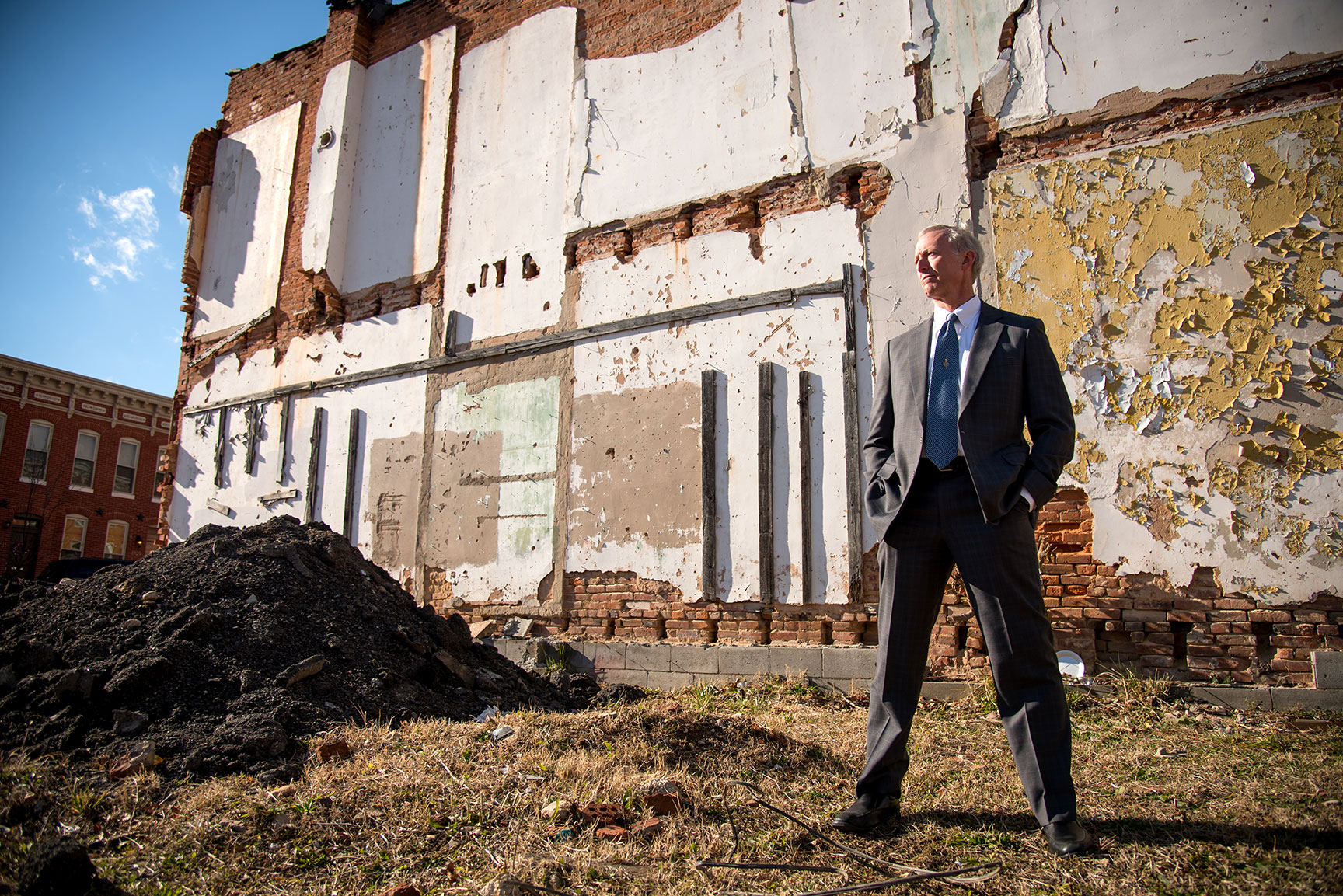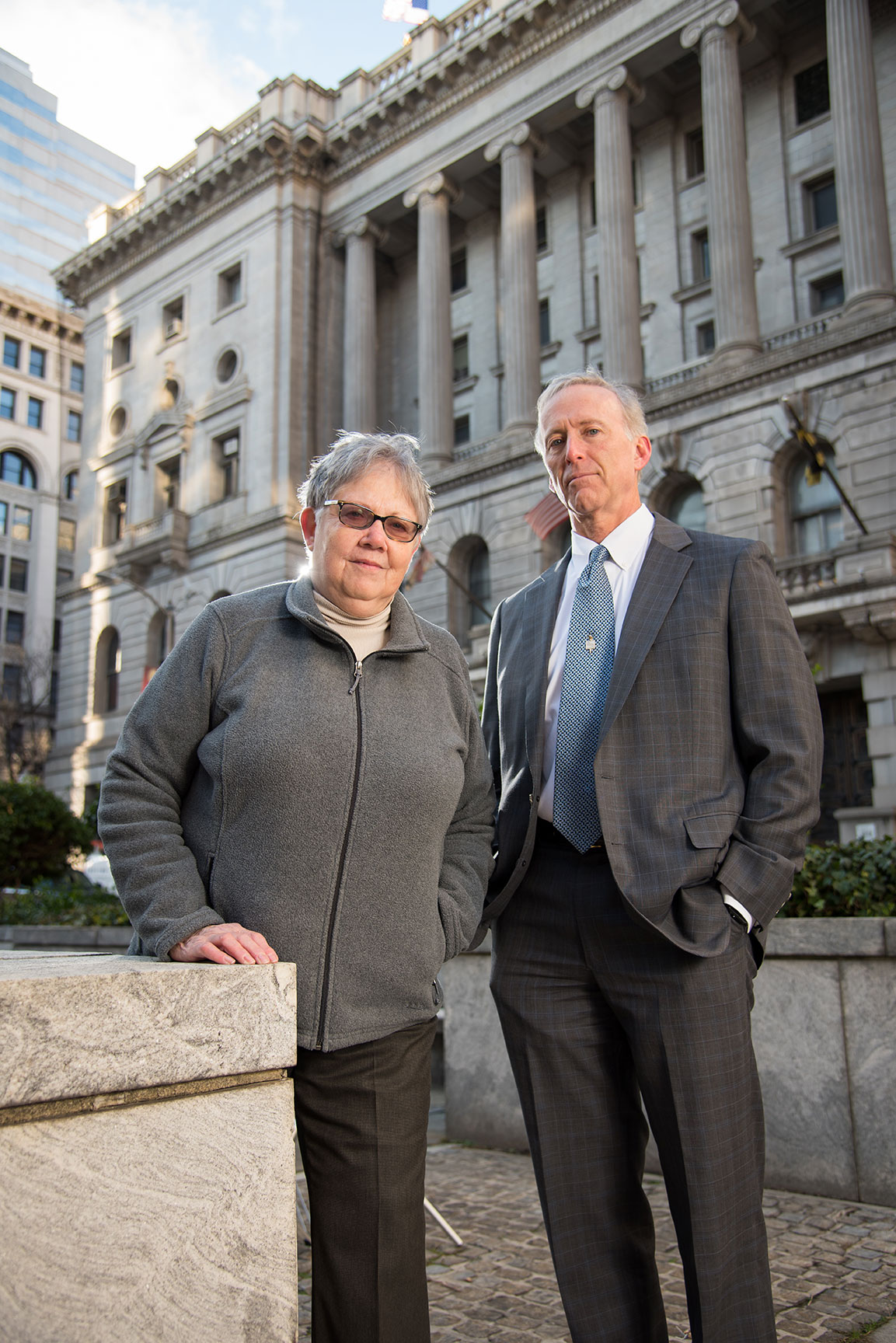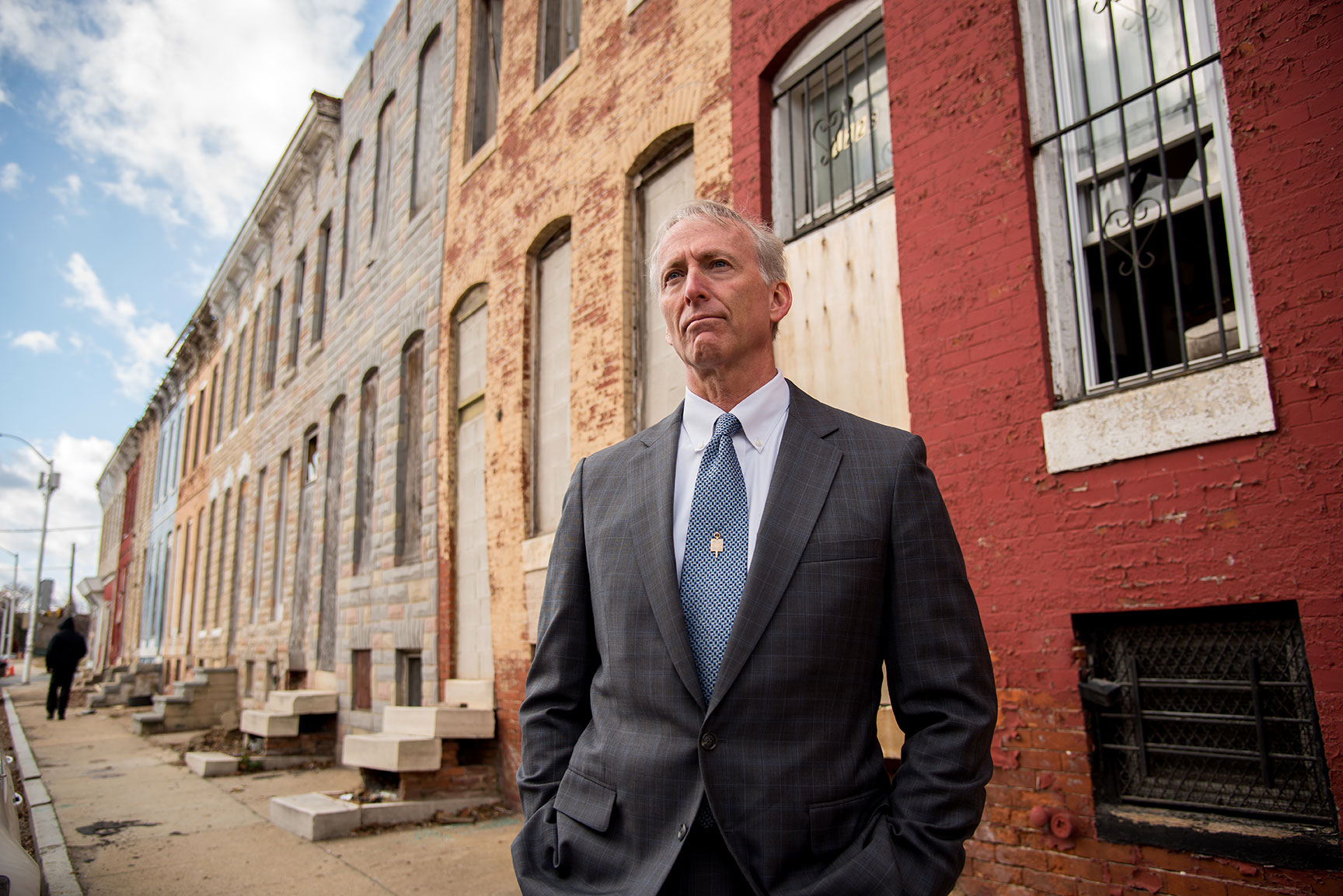Seeking Justice in Baltimore
Seeking Justice in Baltimore
When Saul Kerpelman ’76 launched his law practice in Baltimore 35 years ago, thousands of inner-city children were gravely ill or dying from lead poisoning, and almost nobody seemed to care.

By the time Kerpelman retired from full-time practice in November, his firm had secured over $300 million for more than 4,000 families from landlords and others who had been ignoring the dangers of lead paint for decades. And he credits a fellow Vassar grad, Johns Hopkins University Environmental Science Prof. Ellen Kovner Silbergeld ‘67, with supplying some of the evidence he needed to win his cases.
When he agreed to accept his first client affected by lead paint in 1981, Kerpelman says, judges in Baltimore were routinely dismissing such cases because the law – and most judges themselves -- clearly favored the rights of rich, white landlords over poor, black tenants. “Then I found a hitherto unused section of the Baltimore City Housing Code that I could hang my lawsuits on,” he says.
“I aimed to become the landlords’ worst nightmare…I wanted to motivate them to want to obey the law and be proactive about preventing tenant children from being poisoned.”
As lead is absorbed into the body at high enough levels, it causes the brain to swell, Kerpelman explains. If left untreated the skull eventually crushes the brain. At lower levels there may be no overt symptoms, but permanent brain damage may still occur, disrupting normal physiological processes. Kerpelman knew many young children in Baltimore and throughout the country were being poisoned by the paint, either because they were eating it as it peeled off surfaces in their apartments or ingesting it as a component of household dust. And while he was conducting research for his lawsuits, he learned how Silbergeld had discovered why so many toddlers ingested lead paint chips: She tasted a chip of lead paint herself and discovered it tasted sweet. Her subsequent research established connections between lead and a variety of neurological diseases, and she is widely credited with convincing the federal government to ban lead in gasoline. Silbergeld was awarded a MacArthur Fellowship, a $625,000 cash prize given to innovators in science and other fields, in 1993 in recognition of her accomplishments.

Kerpelman said he had heard Silbergeld was reluctant to talk to attorneys about her work, “but when I was looking to expand my pool of experts, I called her office at Johns Hopkins and used my Vassar connection to get her on the phone. We later testified together on a bill in the state legislature that would have allowed children to sue the pigment manufacturers.”
Kerpelman said Silbergeld provided him with vital scientific information and advice. “She testified for me at that legislative hearing, and she steered me to others in the field who were willing to testify in court,” he says.
That anti-lead bill before the Maryland Legislature was later defeated in the face of massive lobbying by the lead and insurance industries. Kerpelman says it was this wealthy and powerful opposition, as well as outright racism, that often prevented him from winning lawsuits for poor black children who were clearly suffering from lead poisoning.
“Often, when I tried to take these cases to trial, I was told by other attorneys, ‘You’ll never get them to a jury,’” he says. “The judges back then were largely old, white, racist guys who weren’t about to let a poor, inner-city black child threaten rich, white, politically connected landlords.”
Kerpelman says in the early days of his practice he was sometimes able to convince judges and defendants in the lawsuits to reach reasonable settlements in cases in which children had died or were seriously ill from brain swelling. But he often faced a challenge convincing them to compensate families of children with lower levels of lead who had behavioral issues and learning disabilities triggered by lead that was absorbed into brain tissue. Children exposed to lead are six times more likely to be learning disabled and seven times more likely to have contact with the criminal justice system, Kerpelman says.
“One of my advisors at Johns Hopkins once told me, ‘If this problem affected wealthy, white families, it would have been solved a long time ago.”
Silbergeld says she shared Kerpelman’s frustration as he faced difficulties obtaining justice for poor, black families in spite of the overwhelming scientific evidence that lead was the cause of their illness. “One of my advisors at Johns Hopkins once told me, ‘If this problem affected wealthy, white families, it would have been solved a long time ago,” she says.
Silbergeld says she grew to admire Kerpelman for his persistence in fighting for his clients in the face of such obstacles. “Anybody who met Saul knew immediately he was a person who was deeply concerned with social justice,” she says. “When I saw him in action, I was struck by how soft spoken he was. But he was enormously sincere and dedicated, and when he won a case, he’d always say, ‘The fight’s not over.’”
Kerpelman says his efforts finally paid off in a landmark case he took to the Maryland Court of Appeals in 1999. He and his client, a toddler named Clayton Brown, had lost their case in a lower court in 1997, but Appeals Court Judge Robert Bell, one of the first African Americans to serve as a Maryland appellate justice, overturned the dismissal of the case, explicitly endorsing Kerpelman’s theory of the meaning of the mandate in the housing code to keep homes free of flaking paint.

“That didn’t end the fight, but it made my job easier,” Kerpelman says, explaining he could cite Judge Bell’s ruling in future lawsuits.
The importance of fighting for unpopular causes was forged during Kerpelman’s childhood. He was 9 years old when he watched his father argued the most famous school prayer case before the U.S. Supreme Court. The 1963 court ruling banned mandatory prayer in public schools. Kerpelman says the social consciousness that was instilled in him by his family was reinforced at Vassar, where he majored in history. “We were taught to question everything and to accept nothing as absolute truth,” he says. ”I was re-energized at Vassar to go out and fight for what was right in the world.” He launched his law practice in 1980 after graduating from Duke Law School.
Kerpelman’s sense of adventure and willingness to try new things prompted him to join Vassar’s first rugby team in the fall of 1975. He played in Vassar’s first intercollegiate rugby match against Union College and has been part of the college’s rugby family ever since, attending games when he can and traveling with the team on trips overseas. And throughout his crusade for lead paint victims, his family has fought alongside him. His wife, Donna Mackay Kerpelman ’79, is also a lawyer and has joined him in litigating lead paint cases, and their five children have also participated in the effort.
While he is retiring from the full-time practice of law, Kerpelman says he’s certain he’ll soon be pursuing other projects. And while he’s proud of the groundbreaking work he did in the field, he says he also has some regrets.
“It’s gratifying to know I helped thousands of families have a better life, and that I trained dozens of other lawyers to courageously continue the fight for justice for innocent victims of lead,” Kerpelman says. “But the lead industry and the landlords are still protected – there are still loopholes in the law, and racism still rules the day. I wish I could have done more.”